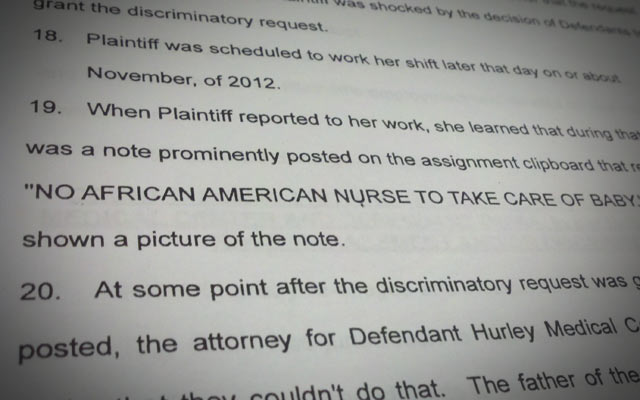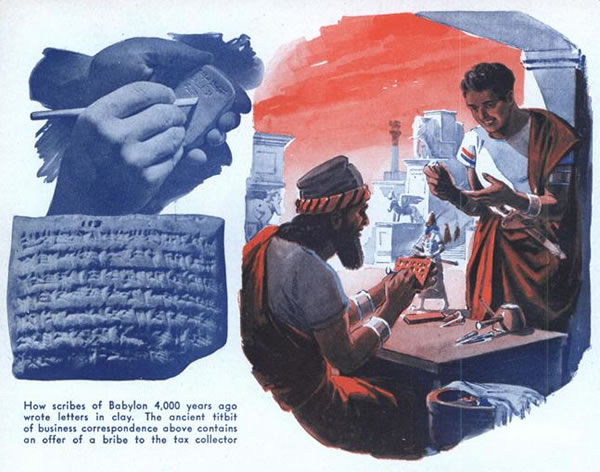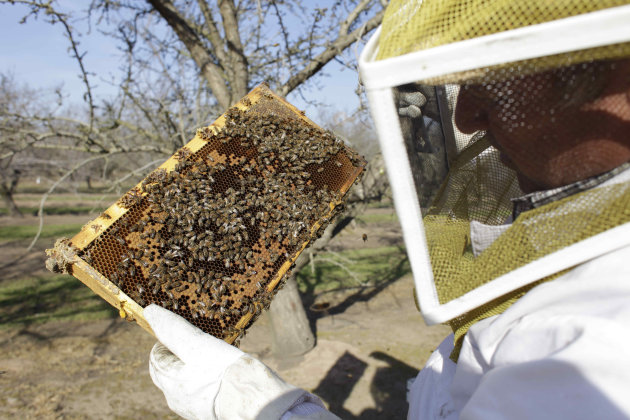Congress' latest crack at a new
assault weapons ban
would protect more than 2,200 specific firearms, including a
semi-automatic rifle that is nearly identical to one of the guns used in
the bloodiest shootout in
FBI history.
One model of that firearm, the Ruger .223 caliber Mini-14, is on the
proposed list to be banned, while a different model of the same gun is
on a list of exempted firearms in legislation the Senate is considering.
The gun that would be protected from the ban has fixed physical
features and can't be folded to be more compact. Yet the two firearms
are equally deadly.
"What a joke," said former FBI agent John Hanlon, who survived the 1986 shootout in Miami. He was shot in the head, hand, groin and hip with a Ruger Mini-14 that had a folding stock. Two FBI agents died and five others were wounded.
Hanlon recalled lying on the street as brass bullet casings showered on him. He thought the shooter had an automatic weapon.
Both models of the Ruger Mini-14 specified in the proposed bill can
take detachable magazines that hold dozens of rounds of ammunition. "I
can't imagine what the difference is," Hanlon said.
President Barack Obama has called for restoring a ban on military-style assault weapons and limiting the size of ammunition magazines.
A bill introduced last month by Sen. Dianne Feinstein, D-Calif. would ban 157 specific firearms designed for military and law enforcement use and exempt others made for hunting purposes. It also would ban ammunition magazines that hold more than 10 rounds.
Yet there are firearms that would be protected under Feinstein's
proposal that can take large capacity magazines like the ones used in
mass shootings that enable a gunman to fire dozens of rounds of
ammunition without reloading.
Feinstein said in a written response to questions from The Associated
Press that the list of more than 2,200 exempted firearms was designed
to "make crystal clear" that the bill would not affect hunting and
sporting weapons.
The December shooting at an elementary school in Newtown, Conn., that
left 26 students and educators dead forced Washington to focus on
curbing gun violence, a risky political move not tried in decades.
The gun industry, which is fighting any sort of ban, says gun
ownership in the U.S. is the highest it's ever been, with more than 100
million firearms owners.
Obama and Vice President Joseph Biden have traveled around the
country in an effort to gain support for new laws. Feinstein's proposal
is the only sweeping piece of legislation designed to ban assault
weapons currently being considered.
But some gun experts say the lists of banned and exempted firearms show a lack of understanding and expertise of guns.
"There's no logic to it," said Greg Danas, president of a
Massachusetts-based expert witness business and firearms ballistic
laboratory. "What kind of effect is it going to have?"
Feinstein's bill defines an
assault weapon as a semi-automatic firearm with a detachable magazine
that has one of several military characteristics that are specified in
her legislation. Examples of those characteristics include a pistol
grip, which makes a firearm easier to hold, and a forward grip, which
makes the firearm easier to stabilize to improve accuracy. The
definition is similar to the one in Congress' original ban on assault weapons, which went into effect in 1994 and was widely criticized for outlawing firearms based on cosmetic features.
Feinstein was behind the 1994 law which, at the time, protected more
than 600 firearms. The current bill would exempt by name and model more
than 2,200 firearms by name and model.
Feinstein said her staff had worked for more than a year to draft
updates for the ban that expired in 2004, and it was apparent in the
wake of recent mass shootings that now was the time to introduce a new
bill. She said her staff consulted with law enforcement agencies and
policy experts for months to create the expanded list.
Naming firearms that would remain legal under an assault weapons ban
is a politically motivated gesture that was used to help pass the
original ban in the early 1990s, people familiar with the process said.
Any firearm that does not fall within the law's definition of an
assault weapon would not be banned. As a result, the list gives
vulnerable politicians cover from constituents who do not want to give
up their firearms.
For example, a politician can look at the list and assure a
constituent that the government would not ban the firearm he or she
loves to use for deer hunting. Under the 1994 law and the currently
proposed one, the government would not have the authority to take away
guns people already legally own. The ban would only apply to specific
firearms manufactured and sold after the law is enacted.
A list of exempted firearms was not part of Feinstein's original
assault weapons ban two decades ago, said Michael Lenett, one of the
lead congressional staffers on gun control issues in 1994. A separate
bill in circulation exempted far fewer hunting and sporting firearms,
Lenett said.
The purpose of creating such a list was to assure people that the
government was not going after any legitimate hunting or sporting
weapons. "The other purpose of the list was to have a high profile way
of assuring certain folks — including legislators — that we would not be
going after their weapons that they use for those legitimate purposes,"
Lenett said.
"It was a win-win situation," Lenett recalled, because, he said, if
the list could help pick up votes needed to pass the bill and temper
some of the opposition, it could assuage some opponents of the ban
without making the law less effective.
But gun experts say the lists in 1994 and the expanded lists of today don't make much sense.
"The bill demonstrates a shocking ignorance of the product they are
purporting to regulate," said Lawrence Keane, senior vice president of
the National Shooting Sports Foundation, a trade association based in
Newtown, Conn., that represents gun manufacturers. "I have no idea how
they arrived at this list. It would seem to be random, bordering on
throwing darts at a dart board."
For instance, Feinstein's current proposal includes exemptions for
three specific types of the M-1 Carbine, an assault rifle designed for
the military that the U.S. currently bans from being imported. A draft
of the legislation, created and modified in November and early December
last year, banned the M-1 Carbine and didn't exempt any models,
according to a copy obtained by the AP.
Feinstein said there was disagreement among firearms experts, law enforcement and gun safety organizations about whether to include the M-1 Carbine on the list of banned weapons.
"It has been used in multiple police shootings, and was originally
used by U.S. soldiers on the battlefield," Feinstein said. "On the other
hand, it comes in models that would not meet the military
characteristics test." She said she decided to limit banned weapons to
those that met the definition outlined in the bill.
At a Jan. 30 hearing by the Senate Judiciary Committee on gun
violence, National Rifle Association President Wayne LaPierre said
Feinstein's bill is "based on falsehoods to people that do not
understand firearms, to convince them that the performance
characteristics of guns that they are trying to ban through that bill
are different than the performance characteristics that they're not
trying to ban."
The Ruger Mini-14 is a perfect example.
The model that has a fixed stock would be exempted by Feinstein's
ban; the weapon was protected in the 1994 law as well. A Ruger Mini-14
with a collapsible and folding stock would be illegal.
The guns fire the same caliber bullet and can take detachable
magazines that could hold dozens of rounds of ammunition. The folding
stock only reduces the gun's length by 2.75 inches, according to the
manufacturer's website.
"It's irrelevant," Edmund Mireles, an FBI agent who survived the
Miami shootout, said of the differences in features. "They're equally
dangerous."
Mark D. Jones, a senior law enforcement adviser for the University of
Chicago Crime Lab, said the folding stock does not affect the firearm's
lethal potential.
"Given that both firearms will accept a 30 round or larger magazine,
it renders the differences between them entirely cosmetic," Jones said.
Kristen Rand, the legislative director at the Washington-based
Violence Policy Center, said the Ruger Mini-14 model that would be
banned under Feinstein's legislation is easier to hold while firing
because it has a pistol grip, and it's easier to hide because it has a
collapsible stock. That's what makes it more dangerous that the Ruger
Mini-14 with the fixed stock which would be exempted under the Feinstein
bill, she said.
"And that's supposed to save somebody's life?" asked Hanlon, the FBI agent shot alongside Mireles.
Hanlon considered the differences between the two models and whether
the events of April 11, 1986, would have been different if the shooter
used a Ruger Mini-14 with a fixed stock. "I don't think it would have
changed a damn thing," he said. "I don't see what makes that gun less
dangerous."






 In
1973, the U.S. prison population was 330,000. Today, we have well over
two million people locked up. What happened? NPR traces the beginning of
the War on Drug to Nelson Rockefeller's decision to get tough on drug
pushers, addicts, and users 40 years ago to combat a heroin epidemic in
New York City.
In
1973, the U.S. prison population was 330,000. Today, we have well over
two million people locked up. What happened? NPR traces the beginning of
the War on Drug to Nelson Rockefeller's decision to get tough on drug
pushers, addicts, and users 40 years ago to combat a heroin epidemic in
New York City.  Is
the secret to improving your kids' grade be as simple as who they're friends
with? Maybe so, according to a
Is
the secret to improving your kids' grade be as simple as who they're friends
with? Maybe so, according to a 

 An
unnamed man in Turkey was diagnosed two years ago with vampirism,
dissociative identity disorder, major depressive disorder, alcohol
abuse, and post-traumatic stress disorder. The PTSD, and possibly the
alcohol abuse, were attributed to the crimes he committed due to the
vampirism.
An
unnamed man in Turkey was diagnosed two years ago with vampirism,
dissociative identity disorder, major depressive disorder, alcohol
abuse, and post-traumatic stress disorder. The PTSD, and possibly the
alcohol abuse, were attributed to the crimes he committed due to the
vampirism.


 Computer
crashes may soon be a thing of the past, thanks to new research by University
College London computer scientists Peter Bentley and Christos Sakellariou.
They've created a crash-proof computer by introducing chaos and randomness:
Computer
crashes may soon be a thing of the past, thanks to new research by University
College London computer scientists Peter Bentley and Christos Sakellariou.
They've created a crash-proof computer by introducing chaos and randomness:








 The
last thing you want to do is expose a wound, even a small skin
abrasion, to an environment crawling with microbes. Then consider the
alligator, which leads a rather violent life and lives in swamps. But
alligators don't succumb to infection they way you'd think -they have a
natural immunity in their blood.
The
last thing you want to do is expose a wound, even a small skin
abrasion, to an environment crawling with microbes. Then consider the
alligator, which leads a rather violent life and lives in swamps. But
alligators don't succumb to infection they way you'd think -they have a
natural immunity in their blood.
